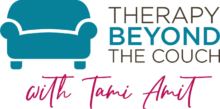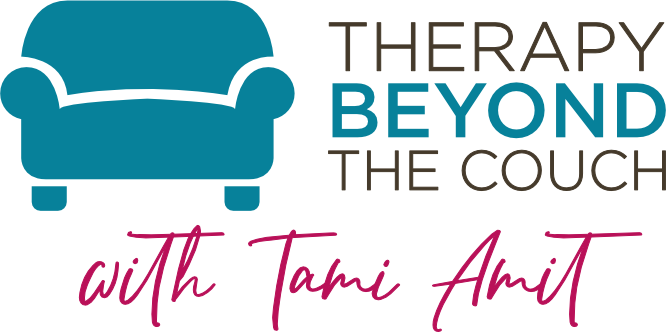The ‘I am not safe/secure’ core belief
The Core Belief Quiz
The Core Belief that is sabotaging your life and blocking your growth is:
“I am unsafe.”
Dear Friend,
Your core belief, “I am unsafe” is a lie your brain has been telling you for years. You can come up with hundreds of experiences that supposedly prove this belief, but that is only because it controls what you pay attention to (and what you ignore), how you interpret the world, and how you make sense of your place in it. That’s why this belief seems valid, but it is not!
Perhaps people have explicitly said to you, “You are always in danger” but they were unfortunately and wrongfully projecting onto you their own fears and erroneous core beliefs.
You may already know in your conscious mind that this belief is false (and that’s great!), but in your subconscious mind, which controls up to 95% of your daily life, this belief is a foundational truth!
And so you continue to attract people and situations to your life that validate the belief, “I am unsafe.”
Your own version of this Core Belief may be “The world is a dangerous place,” “I am waiting for the next shoe to drop,” or “There is no-one I can rely on”. These are just different versions of the same belief.
Becoming aware of your Core Belief is an essential part of taking back control of your life and creating the life you desire.
What about You?
You learned from a young age that letting down your guard is not a smart thing to do, and you should always sleep with one eye open. Your Nervous System is in a constant state of alert and there is always a sense of danger that follows you. Teaching your Nervous System to calm and feel more safe is important for your healing – somatic approaches to therapy are best for you.
You are quite good at reading people and situations and are usually able to predict people’s behavior. This is a protective strategy you have developed to feel safe.
You have constructed your life in a manner that allows you to avoid certain risks. While this has kept you safe, it has also limited your experience and kept you from spreading your wings.
You wonder how other people feel safe in this world when there are so many bad things happening around us. It’s true that real danger exists and it’s important to take precautions to protect our safety, but you tend to overfocus on these dangers and find it hard to get them out of your mind.
You tend to have one foot out the door in relationships. This protects you but it limits the depth of your relationships, and your partners may complain that you are distanced, aloof or checked out.
Trust is hard for you – trust in people, life and even yourself. Ultimately, this is your task – to create trust within yourself – but for now, grounding, grounding, grounding.
Here are a few quick strategies: Play with dirt, walk around barefoot, visualize a strong connection between you and the center of the earth, imagine a red vibrating circle in the middle of your pelvis and notice it spinning.
You create stories in your mind about why certain events occur (even ones that likely have very little to do with you) and you interpret them to mean that you are unsafe. Here are some examples:
“Crime is going up in the city, therefor it is no longer safe”
“Someone I know got cancer, therefore I will probably get it too”
“My body feels jittery- it is no longer safe to be in body”
“It is not safe to go out into the world, even if I take precautions”
“Things are too quiet and calm- something bad is about to happen”
What is a Core Belief?
A core belief (also called a limiting belief) is a biased conclusion about yourself created when you were a young child.
Imagine a five-year-old child signing a contract that determines everything that happens for the rest of his/her/their life. Seems unreasonable, right? Well, that is what a core belief is – an interpretation created during a vulnerable age when our understanding of reality is skewed and incomplete.
Once created, the belief acts as a lens through which you perceive everything that happens to you. Present in every interaction, it automatically poses the question, “What bad thing does this say about me?” (The answer is never good!)
Throughout your life, stimuli from either the internal or external environment can trigger this belief or “press its button,” activating shame, sadness, fear and other detrimental feelings, thus dominating your experience of reality.
You unintentionally communicate your core beliefs to other people, even when your words say the opposite. People unconsciously sense and respond to your core beliefs much more than to your words and actions.
All of us have two or three core beliefs that control our lives and block our growth. Every difficulty or elevated emotion you experience in your home, at work, or in any of your relationships is in fact, an activation of one of these core beliefs.
How is a Core Belief Created?
Core Beliefs are created through trauma.
A trauma is any experience (not necessarily something dire such as war, divorce, or a terrible accident) that causes us to feel sad, ashamed, scared, AND alone with our feelings.
In these moments of overwhelm, our subconscious mind attempts to regain a sense of control and safety (called equilibrium) by interpreting the data it receives from the external and internal environment and creating a conclusion about what it means.
That conclusion becomes a core belief.
Once that belief is activated, it becomes the thing we fear the most or our darkest shadow. To ensure that this belief is never again enacted, the Subconscious then creates a set of instructions (called protective strategies). The most common protective strategies are avoiding, sabotaging, deflecting, and attacking.
The general thinking is:
“As long as I do (insert protective strategy), the Core Belief would stay hidden.”
But here is the problem. When first created, protective strategies were useful ways to stay safe, to belong, and to feel supported, but as we mature and as our world expands, the old strategies tighten around us like an old suit that no longer fits, creating disconnection and limitation in our lives.
Instead of disproving the core belief, the protective strategies reaffirm it!
Imagine a teacher telling a child in front of the class, “You are lazy and not worth my time!” As a consequence, the child feels sad, embarrassed, and alone. His/her/their subconscious mind tries to make sense of the experience, thereby creating a conclusion about the self: “I am useless and weak.” To make sure no one ever finds out this “truth,” the child creates a strategy of protection: “I will never let people get close to me so they will never find out I am useless and weak! This strategy keeps their relationships superficial and meaningless, and the child – now an adult – continues to feel useless and weak.
What is Your Task on Earth?
Uncovering and releasing our core beliefs frees us to create a life that is authentic and joyful. Your task in this life is to unlearn every core belief and assign an opposite that works for you.
For example, below are some opposites for the core belief, “I am unsafe.”
“I am safe.”
“I am protected.”
“If something bad happens, I will handle it.”
“If something bad happens, I have people to help me.”
“I am supported.”
Can you come up with a list of opposites for your core belief?
How do You Release a Core Belief?
Find a moment when you’re undisturbed and follow these seven steps:
- Repeat the core belief to yourself and notice what feeling comes up.
- Notice where you feel this feeling in your body, and tune into its physical sensation.
- Hold the belief, feeling, and physical sensation in your mind and allow your subconscious mind to lead you back to an earlier time in your life – perhaps even the first time – when you felt that same sensation in that area in your body.
- Once you’ve reached that earlier time (even if the memory makes no sense and/or you’re not sure it really happened), notice this younger version of yourself and tell him/her/them: “I see you. I am here for you. You are no longer alone.”
- Does the younger version of you have a story to tell you? Is there a truth that needs to be spoken? Ask him/her/them, “Is there something you need to say?” Continue this inquiry until the younger version of you has no more to say. Then, offer a hug!
- Now, notice the space that has opened up in your body. Pick one of the opposites of the original core belief or come up with a new one that feels right in this moment. If the new statement had a colour, what would it be?
- Imagine a strong, gentle, and beautiful stream of this colour entering through the top of your head, flowing down your body, and filling all of the space that has been opened up. Rest here.
Let me know how this process worked for you! Direct Message me on Instagram @therapybeyondthecouch or email me at tami@therapybeyondthecouch.com.





